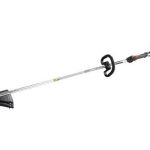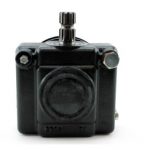
A young tree will remain healthy if properly selected, planted, trained, and pruned.
(Courtesy: Ismail at flickr.com)
In a previous article about selecting and planting a tree, I discussed what to look out for when choosing a tree from a nursery and planting it properly to avoid future health issues.
The process of maintaining a tree so that it remains healthy for life doesn’t end with simply a proper selection and planting. You must know how to properly stake a young tree so that it will get support during its first years of growth, train the tree so that it grows stronger and able to stand up to a storm, and properly prune or trim the tree as it matures.
Staking
A young tree after planting needs to be properly staked so that it gets support during its first few years of growth. How it is staked can influence its strength and shape. If the tree is not correctly staked, then it could get injured and fail to develop a strong, straight trunk.
Not all new trees need to be staked. So to determine if the tree you have needs the support assess its condition after you untie it from the nursery’s stake.
If the tree cannot stand upright after you cut off the nursery stake, then a stake is necessary. Follow these steps to ensure a proper staking.
1. Place a stake into the ground on opposite sides of the tree outside of the root ball. Make certain that a strong wind can blow through the two stakes. Once the stakes are in the ground, remove the nursery’s stake.
2. Determine the proper height of the supporting tie of the stake. This is done by supporting the trunk with two fingers at 3-feet above the soil and moving your fingers up until the tree stands upright.
3. Place ties 6-inches above this point.
4. If you intend to use a wooden stake, then cut off extra stake at 2-inches to 3-inches above the ties.
5. If the tree needs to be protected from vandals or vehicles, wrap a wire cage around the tree stakes to serve as an anchor.
6. Examine the ties to avoid girdling, restriction, and breakage of the trunk. The stake should remain upright and should not rub the trunk or branches.
7. Remove the stake and ties once you determine that the tree can stand upright on its own.
Training a Young Tree
Training a tree helps it develop structural strength and minimizes the possibilities that it could break apart in a storm. In addition, trees that go through this procedure for the first five years of life require less maintenance, will live longer and will have a lower risk of branch failure.
Follow these steps to train your tree.
1. Remove broken, diseased, dying or dead branches.
2. Choose a central upright leader and remove competing upright shoots.
3. Select the lowest branch on the tree that will remain for its entire life.
4. Choose primary scaffold branche+s and remove competing branches. The scaffold branches should be spaced in a radius around the trunk and vertically spaced from 12-inches to 15-inches between branches.
5. Select scaffolds of strong branch attachment that has a diameter that is no more than half the diameter of the trunk.
6. Choose temporary branches below the lowest permanent branch and remove branches that have a diameter larger than one-third the trunk.
You should avoid cutting more than 25 percent of a young tree’s canopy during a one-year period. Training should be performed during the dormant season or the winter months. Keep performing these steps to the young tree each year until it accomplishes good structure and form.
Pruning a Tree
If you have properly selected, planted, trained, and maintained the tree, then a little pruning will probably be necessary after the tree reaches maturity. Minimal pruning a tree would include the removal of poorly positioned or competing limbs, weak branch attachments or branches that are dying or are dead.
It is important that you inspect the tree yearly to determine the overall condition and to ascertain whether any limbs need to be removed. You may want to thin out dense foliage from the tree to assure more sunlight and air movement.






